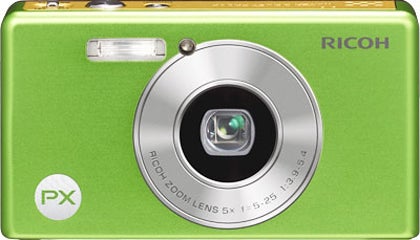Sealed against water, dust, dirt and shock, the Ricoh PX distances itself from its rivals with a stylish minimal design. What Digital Camera investigates whether the PX's images are just as easy on the eye...
Ricoh PX
Performance and Image Quality
Ricoh PX review – Performance
There’s only a brief pause between turning the Ricoh PX on and it being ready to use, and the camera powers down in as good a time. Set to its multi-pattern focusing mode, the AF system does well to immediately spot and focus on the key elements in the scene, and it doesn’t take long for the camera to bring subjects into focus either, even when light levels dip.
The only annoyance with operation concerns the camera’s zoom. The rocker on the camera’s top plate would be better placed on the back of the camera where it could be controlled by the thumb (or alternatively, around the shutter release button), while the lens itself moves unsteadily through its range, beginning slowly before powering through hastily to the other extreme. While it’s possible Ricoh has intended this to be the case, it’s somewhat irritating when you’re trying to set the lens to a specific point.
Ricoh PX review – Image Quality
The camera’s image quality is reasonable, but it struggles to overcome image noise at all ISO sensitivities. Even when taken in good light images result with a slight texture and softening from image noise reduction, both of which compromise image details. At the highest few sensitivities image noise and colour are drawn out of images by the camera’s noise reduction, which leaves them looking flat and uninspiring.

Elsewhere, however, things are better. Some distortion at wideangle is visible but it’s admirably controlled, while only minor traces of purple fringing contribute to the camera’s overall chromatic aberrations. The metering system only fails to hit the spot on a handful of occasions, although the Auto White Balance system can be a little inconsistent at times. Colour is pleasing, though, with images showing a close resemblance to real life hues. On some occasions, therefore, the user may wish to increase saturation a little, particularly if printing images straight away.






